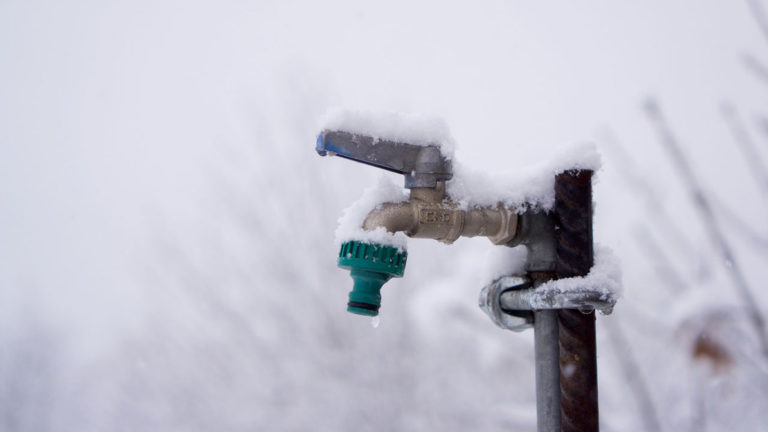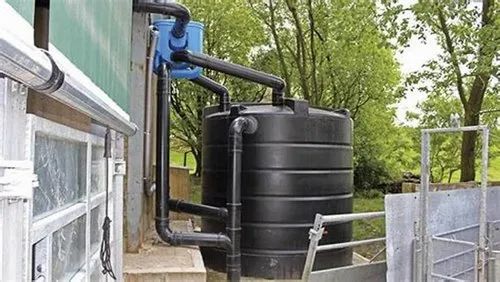Rainwater collection and filtration systems have become increasingly popular as a reliable source of clean drinking water.
There are several effective methods for purifying rainwater, including sedimentation, sand filtration, activated carbon filtration, and ultraviolet (UV) light disinfection.
These methods can be combined to create a comprehensive filtration system that produces safe and healthy drinking water.
We will explore the benefits of rainwater collection and the various filtration methods available for removing contaminants and improving water quality.
Whether you’re looking to install a new system or maintain an existing one, understanding these techniques can help ensure your access to clean drinking water during times of crisis or as a long-term solution for sustainable living.
Sedimentation
The first step in rainwater filtration is to remove any visible sediment and debris. This can be done through a sedimentation tank or a coarse filter.
This can be accomplished through a sedimentation tank or a coarse filter.
A sedimentation tank is a large container that is designed to hold rainwater for a period of time, allowing any sediment and debris to settle to the bottom.
The water is then drained from the top, leaving behind a clearer and cleaner liquid.
Alternatively, a coarse filter can be used to remove larger pieces of sediment and debris.
These filters use a medium such as sand or gravel to capture larger particles, leaving the water cleaner and more purified.
Regardless of the method chosen, the goal is the same: to remove any visible sediment and debris from the rainwater before proceeding to the next step in the filtration process.
By doing so, you can ensure that the water is cleaner and safer for use in your home or business.
Active Carbon Filtration
Active carbon filtration is a common method used to remove impurities and odors from rainwater. Activated carbon is a type of carbon that has been treated to increase its surface area and adsorption capacity.
Active carbon filtration is an effective method for removing impurities and odors from rainwater.
Activated carbon, a type of carbon that has been treated to increase its surface area and adsorption capacity, is the key component in this filtration process.
Activated carbon is made by heating organic materials, such as coal or coconut shells, to high temperatures in the absence of oxygen.
This process increases the surface area of the carbon, allowing it to adsorb (or attract) impurities and odors from the rainwater.
When rainwater passes through an activated carbon filter, the impurities and odors are attracted to the surface of the carbon and held there.
The filter is designed to allow the water to pass through while the impurities and odors are retained, resulting in cleaner and fresher water.
Activated carbon filters can remove a wide range of impurities, including chlorine, lead, and volatile organic compounds (VOCs), as well as unpleasant odors such as those caused by algae or bacteria.
To ensure optimal performance, it is important to regularly maintain and replace activated carbon filters.
Over time, the carbon can become saturated with impurities, reducing its adsorption capacity.
Regular replacement of the filters can help to maintain the effectiveness of the filtration system and ensure the quality of the rainwater.
It is important to note that activated carbon filtration is not a foolproof method for removing all impurities and odors from rainwater.
Other filtration methods, such as ultraviolet (UV) light disinfection or ceramic filters, may be necessary to ensure the water is safe to drink.
Ultraviolet (UV) Purification
UV purification uses high-intensity UV light to kill bacteria, viruses, and other microorganisms in rainwater. This method is effective against a wide range of pathogens and can be used as a standalone treatment or in combination with other methods.
UV purification is a powerful tool for removing harmful pathogens from rainwater, offering a reliable and effective solution for water purification.
By utilizing high-intensity UV light, this method is able to destroy a wide range of bacteria, viruses, and other microorganisms that can be present in rainwater.
The UV light disrupts the DNA of these microorganisms, rendering them unable to replicate and cause harm.
This method is particularly effective against waterborne pathogens such as E.
Coli, Salmonella, and Campylobacter, which are common contaminants found in rainwater.
UV purification can be used as a standalone treatment or in combination with other methods, such as filtration and disinfection, to provide an even more comprehensive approach to water purification.
UV purification is a chemical-free process, making it a safe and environmentally friendly option for purifying rainwater.
Overall, UV purification is a reliable and effective method for removing pathogens from rainwater, providing a safe and clean source of water for a variety of applications.
Reverse Osmosis (RO)
RO is a membrane-based filtration method that uses pressure to force water through a semi-permeable membrane, removing impurities and minerals. This method is effective at removing dissolved solids, bacteria, viruses, and other impurities.
RO is a superior membrane-based filtration method that utilizes pressure to purify water by forcing it through a semi-permeable membrane, effectively removing impurities and minerals.
This technique is particularly effective at dissolving solids, eradicating bacteria, viruses, and other contaminants from water, resulting in a cleaner and safer final product.
The semi-permeable membrane selectively allows water molecules to pass through, while rejecting larger particles and impurities, ensuring that the filtered water is free from a wide range of contaminants.
The pressure aspect of the process enhances the filtration efficiency, making it a highly effective method for producing purified water.
Overall, RO is a reliable and efficient solution for water purification, providing a safe and clean drinking water supply.
Ceramic Filters
Ceramic filters are made from specially designed ceramic elements that have small pores that remove impurities from rainwater. These filters are effective at removing bacteria, viruses, and other microorganisms.
Ceramic filters are a reliable and effective solution for purifying rainwater.
These filters are made from specially designed ceramic elements that have small pores that remove impurities from the water.
The small pores act as a barrier, blocking any harmful bacteria, viruses, and other microorganisms from passing through, resulting in clean and safe drinking water.
Unlike other filtration methods, ceramic filters are able to remove a wide range of impurities, including sediment, algae, and other contaminants that can be harmful to your health.
Ceramic filters are durable and long-lasting, making them a cost-effective solution for providing clean drinking water.
Whether you’re looking for a reliable source of clean drinking water for your home or for emergency preparedness, ceramic filters are an excellent choice.
Microfiltration
Microfiltration is a type of filtration that uses membranes with small pores to remove impurities from rainwater. This method is effective at removing suspended solids, bacteria, viruses, and other impurities.
Microfiltration is a highly effective method for removing impurities from rainwater, using membranes with tiny pores to screen out suspended solids, bacteria, viruses, and other contaminants.
These membranes have a specific pore size that allows water molecules to pass through while blocking larger particles and impurities.
This process is particularly effective at removing suspended solids, which can include dirt, silt, and other sediment that can cloud the water and clog filters.
Microfiltration is capable of removing bacteria and viruses, which can be harmful to human health, providing a safer and more reliable source of clean water.
Overall, microfiltration is an essential tool for any rainwater harvesting system, providing a reliable and cost-effective way to remove impurities and ensure a safe and clean water supply.
Nanofiltration
Nanofiltration is a type of filtration that uses membranes with even smaller pores than microfiltration. This method is effective at removing dissolved solids, bacteria, viruses, and other impurities.
Nanofiltration (NF) is a highly effective method of filtration that utilizes membranes with even smaller pores than microfiltration, typically in the range of 0.001 to 0.02 microns.
This advanced filtration technology is capable of removing an impressive array of impurities, including dissolved solids, bacteria, viruses, and other contaminants.
The nanofilter membranes are designed to selectively allow water molecules to pass through while blocking larger particles and solids, resulting in a high-quality filtrate that is free from a wide range of impurities.
NF is particularly useful in the removal of dissolved solids, such as salts, minerals, and other inorganic compounds, which can be difficult to remove using other filtration methods.
NF is effective against bacteria, viruses, and other microorganisms, making it an excellent choice for a variety of applications, including drinking water treatment, wastewater treatment, and industrial process water treatment.
Overall, NF is a powerful tool for improving water quality and purifying water, offering a high degree of flexibility and effectiveness in a wide range of applications.
Distillation
Distillation is a type of filtration that uses heat to vaporize water and then condenses the water back into its liquid form, removing impurities in the process. This method is effective at removing dissolved solids, bacteria, viruses, and other impurities.
Distillation is a highly effective method of filtration that utilizes heat to purify water by vaporizing it and then condensing it back into its liquid form.
This process is particularly effective at removing dissolved solids, bacteria, viruses, and other impurities that can be present in water.
When water is heated, the dissolved solids and other impurities remain in the water as it vaporizes, leaving clean, purified water behind.
This process is then further purified as the vaporized water condenses and returns to its liquid form, resulting in water that is safe to drink and use.
This method is commonly used in a variety of applications, including residential water treatment systems, commercial water filtration systems, and industrial processes.
Distillation can be used to remove volatile organic compounds (VOCs) and other contaminants from water, making it a versatile and reliable method of water purification.
Want More? Dive Deeper Here!
Hey there! If you’re the type who loves going down the rabbit hole of information (like we do), you’re in the right spot. We’ve pulled together some cool reads and resources that dive a bit deeper into the stuff we chat about on our site. Whether you’re just killing time or super into the topic, these picks might just be what you’re looking for. Happy reading!
- Cooperative Extension | The University of Arizona
- Sustainable clean water production using bamboo activated carbon for rural residents in the Borneo Island :: BioResources
- Utah State University Extension | USU
- Dr. Universe: How did people in ancient times filter water? | Ask Dr. Universe | Washington State University
- After-Storage Treatment | Rainwater Harvesting






